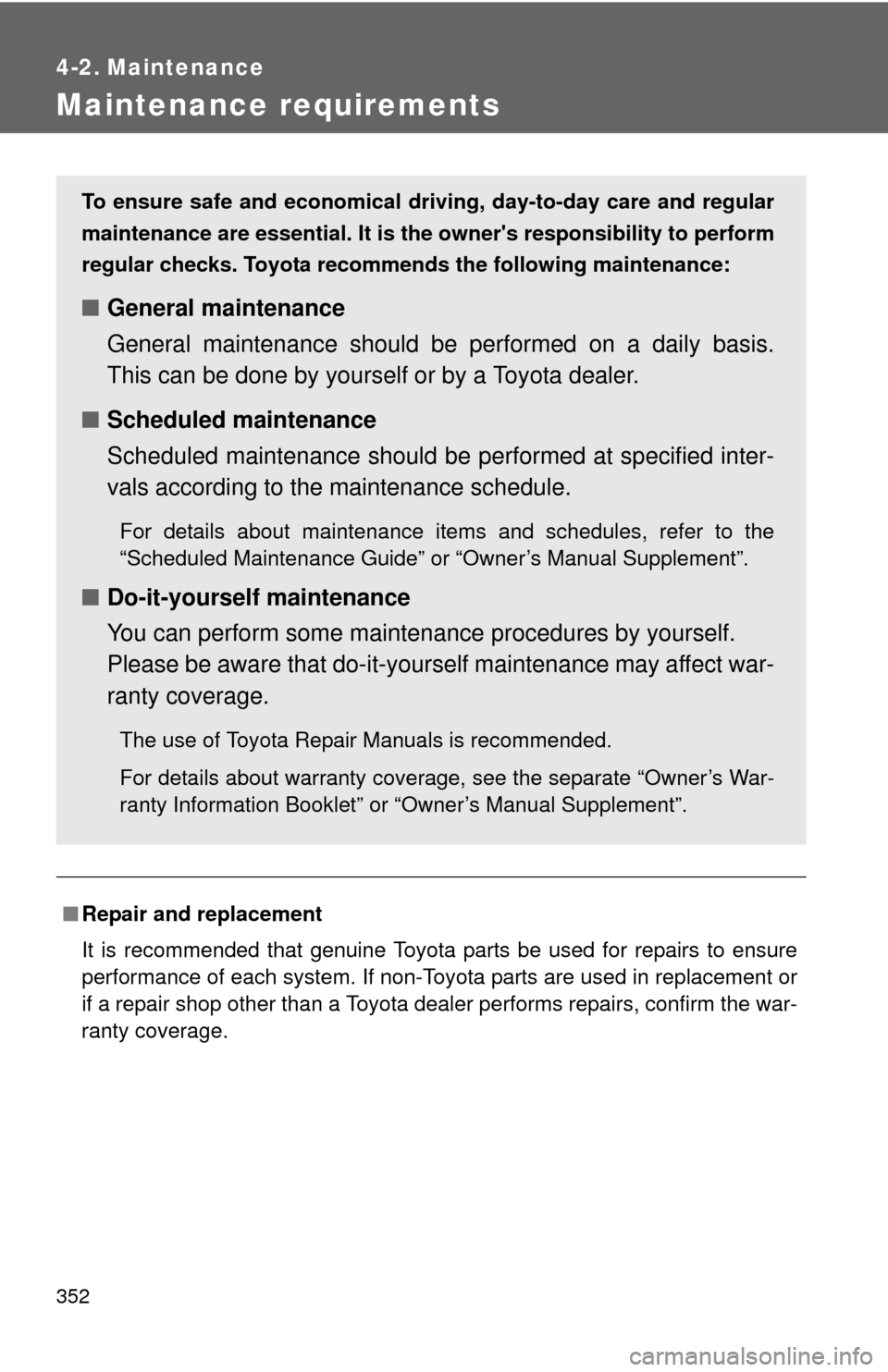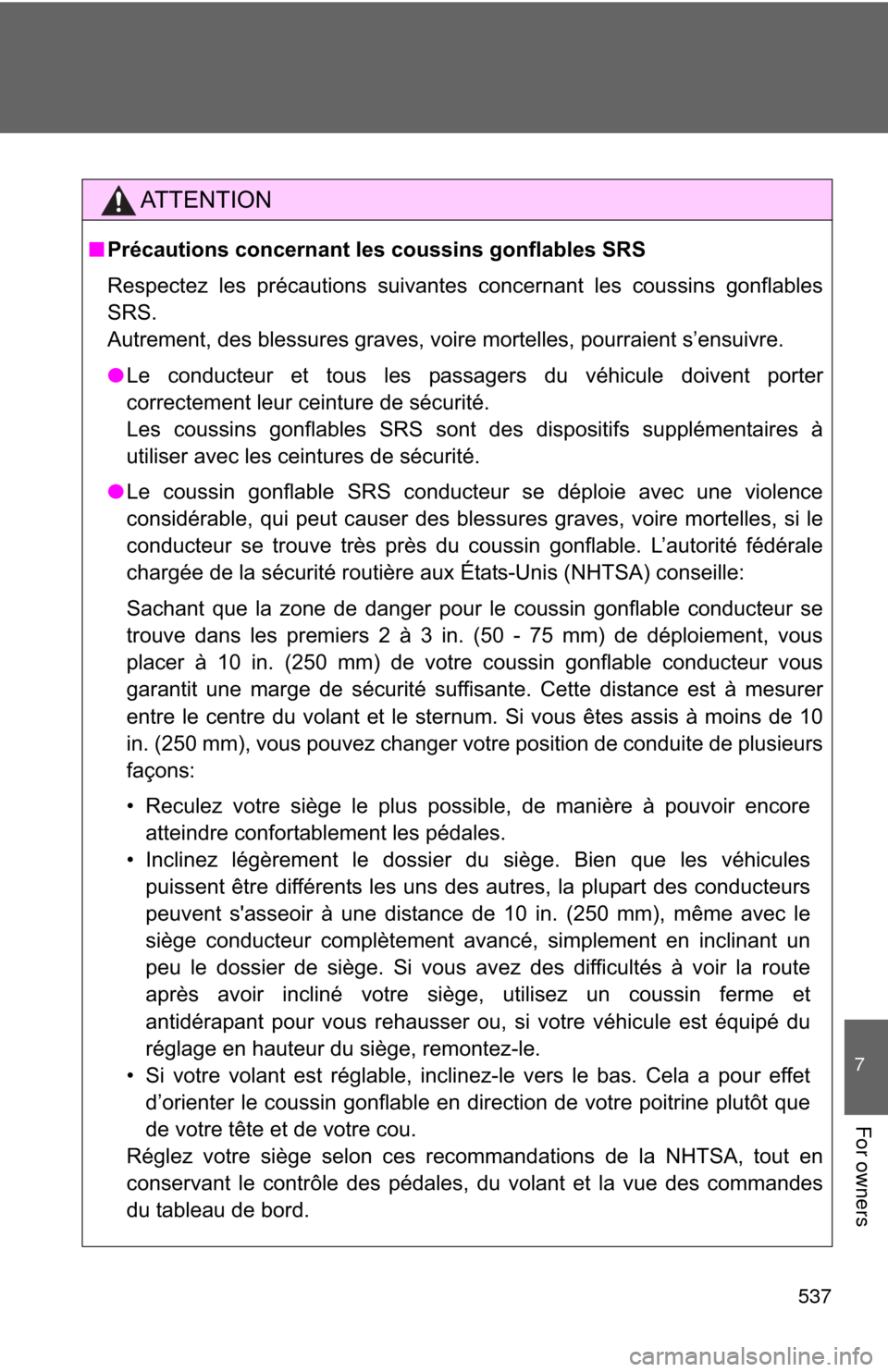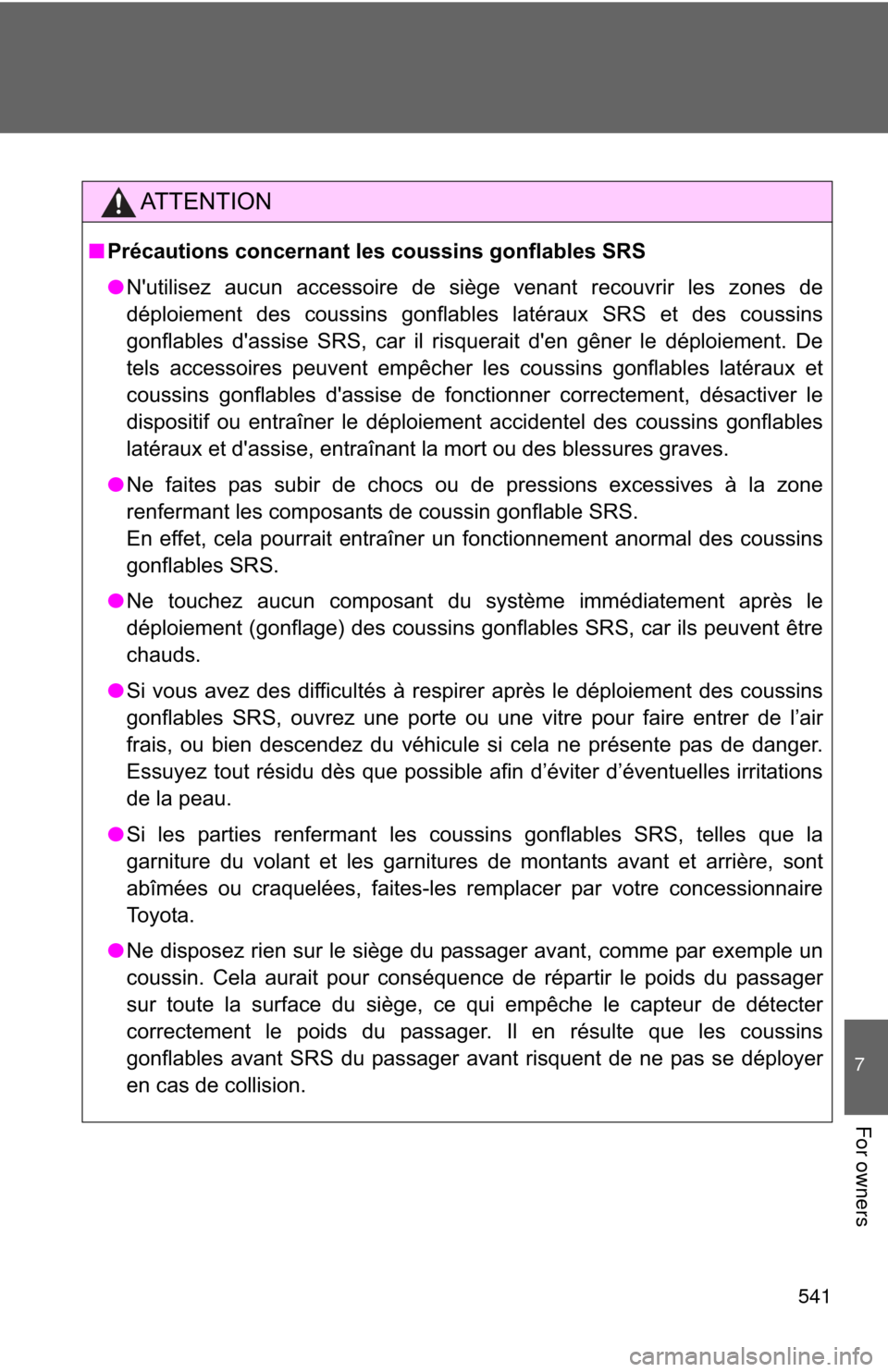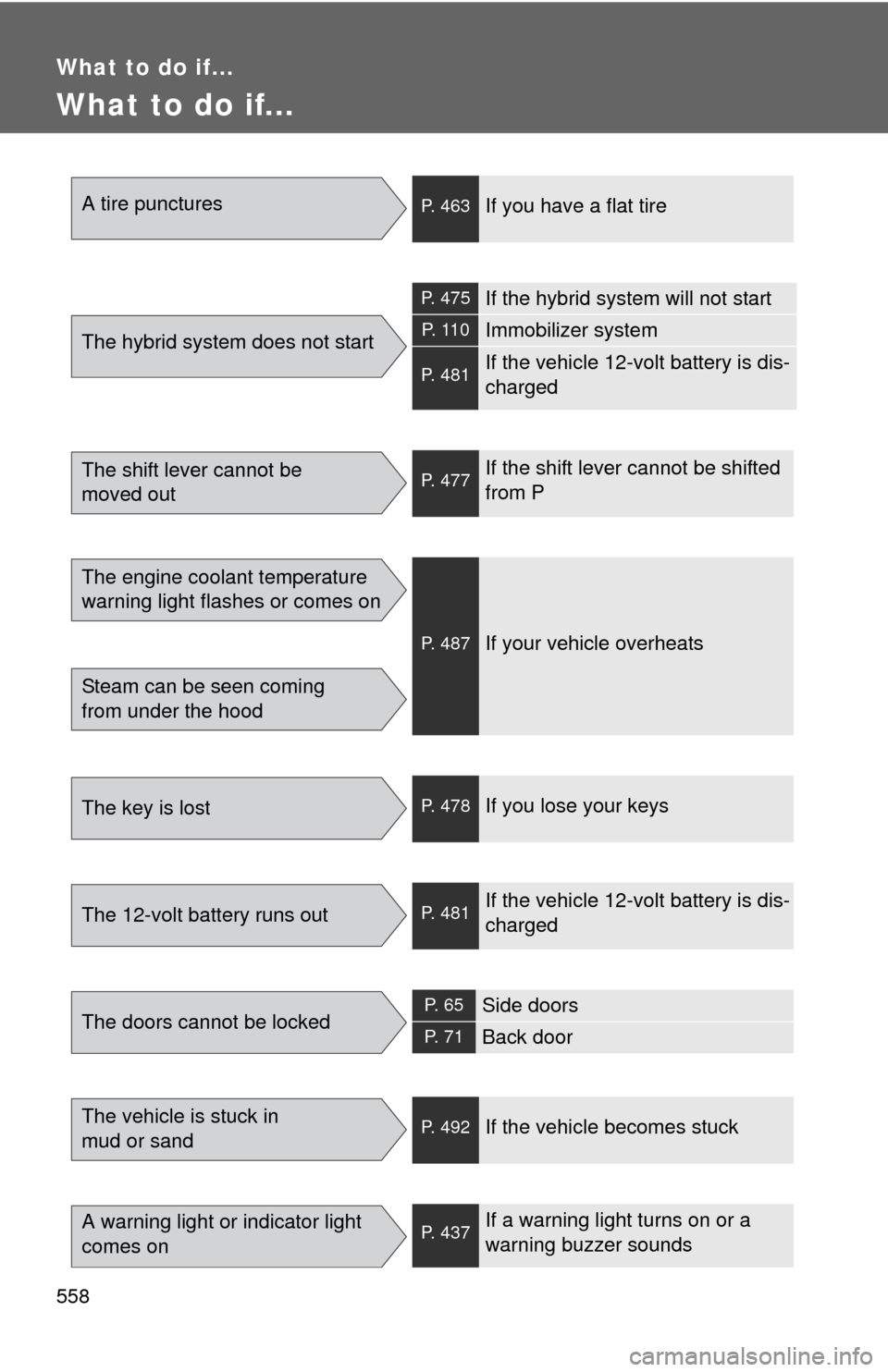2014 TOYOTA PRIUS C ESP
[x] Cancel search: ESPPage 355 of 563

352
4-2. Maintenance
Maintenance requirements
■Repair and replacement
It is recommended that genuine Toyota parts be used for repairs to ensure
performance of each system. If non-Toyota parts are used in replacement or
if a repair shop other than a Toyota dealer performs repairs, confirm the war-
ranty coverage.
To ensure safe and economical driv ing, day-to-day care and regular
maintenance are essential. It is the owner's responsibility to perform
regular checks. Toyota recommen ds the following maintenance:
■General maintenance
General maintenance should be performed on a daily basis.
This can be done by yourself or by a Toyota dealer.
■ Scheduled maintenance
Scheduled maintenance should be performed at specified inter-
vals according to the maintenance schedule.
For details about maintenance items and schedules, refer to the
“Scheduled Maintenance Guide” or “Owner’s Manual Supplement”.
■Do-it-yourself maintenance
You can perform some maintenance procedures by yourself.
Please be aware that do-it-yourself maintenance may affect war-
ranty coverage.
The use of Toyota Repair Manuals is recommended.
For details about warranty coverage, see the separate “Owner’s War-
ranty Information Booklet” or “Owner’s Manual Supplement”.
Page 392 of 563

389
4-3. Do-it-yourself maintenance
4
Maintenance and care
■When the initialization of the tire pressure warning system has
failed
Initialization can be completed in a few minutes. However, in the follow-
ing cases, the settings have not b
een recorded and the system will not
operate properly. If repeated attempts to record tire inflation pressure
settings are unsuccessful, have the vehicle inspected by your Toyota
dealer.
●When operating the tire pressure warning reset switch, the tire pres-
sure warning light doe s not blink 3 times.
●After driving for a certain period of time since the initialization has
been completed, the wa rning light comes on after blinking for 1
minute.
■Tire pressure warning system certification
U.S.A.
FCC ID: PAXPMVC010
This device complies with part 15 of the FCC Rules. Operation is subject
to the following two conditions: (1) This device may not cause harmful
interference, and (2) this device must accept any interference received,
including interference that may cause undesired operation.
FCC WARNING:
Changes or modifications not expre ssly approved by the party responsi-
ble for compliance could void the user's authority to operate the equip-
ment.
Canada
Operation is subject to the following two conditions: (1) this device may
not cause interference, and (2) this de vice must accept any interference,
including interference that may caus e undesired operation of the device.
Page 448 of 563

5
When trouble arises
445
5-2. Steps to take in an emergency
CAUTION
■Maintenance of the tires
Each tire, including the spare (if provided), should be checked monthly
when cold and inflated to the inflation pressure recommended by the
vehicle manufacturer on the vehicle
placard or tire inflation pressure
label (tire and load information label). (If your vehicle has tires of a differ-
ent size than the size indicated on the vehicle placard or tire inflation
pressure label [tire and load information label], you should determine the
proper tire inflation pr essure for those tires.)
As an added safety feature, your vehicle has been equipped with a tire
pressure monitoring system (TPMS-ti re pressure warning system) that
illuminates a low tire pressure telltal e (tire pressure warning light) when
one or more of your tires is significantly under-inflated. Accordingly,
when the low tire pressure telltale (tire pre ssure warning light) illumi-
nates, you should stop and check your tires as soon as possible, and
inflate them to the proper pressure. Driving on a significantly under-
inflated tire causes the tire to overheat and can lead to tire failure.
Under-inflation also reduces fuel effi ciency and tire tread life, and may
affect the vehicle's hand ling and stopping ability.
Please note that the TPMS (tire pressure warning system) is not a sub-
stitute for proper ti re maintenance, an d it is the driver's responsibility to
maintain correct tire pressure, even if under-inflation has not reached the
level to trigger illu mination of the TPMS low ti re pressure telltale (tire
pressure warning light).
Your vehicle has also been equipped with a TPMS (tire pressure warning
system) malfunction indicator to indi cate when the system is not operat-
ing properly. The TPMS (tire pressure warning system) malfunction indi-
cator is combined with the low tire pressure telltale (tire pressure
warning light). When the system det ects a malfunction, the telltale will
flash for approximately one minute an d then remain continuously illumi-
nated. This sequence will continue upon subsequent vehicle start-ups as
long as the malfunction exists. When the malfunction indi cator is illumi-
nated, the system may not be able to detect or signal low tire pressure
as intended.
Page 493 of 563

490 5-2. Steps to take in an emergency
Start the hybrid system and check for the multi-information
display.
If the message does not disappear:Stop the hybrid system and c ontact your Toyota dealer.
If the message is not displayed: Have the vehicle inspected at the nearest Toyota dealer.
CAUTION
■To prevent an accident or injury when inspecting under the hood of
your vehicle
● If steam is seen coming from under the hood, do not open the hood until
the steam has subsided. The engine compartment may be very hot, caus-
ing serious injuries such as burns.
● After the hybrid system has been turned off, check that on the
multi-information display and the “READY” indicator are off.
When the hybrid system is operating, the gasoline engine may automati-
cally start, or the cooling fan may suddenly operate even if the gasoline
engine stops. Do not touch or approach rotating parts such as the fan,
which may lead to fingers or clothing (especially a tie, a scarf or a muffler)
getting caught, resulting in serious injury.
● Do not loosen the radiator cap while the hybrid system and radiator are
hot.
Serious injuries, such as burns, may result from hot coolant and steam
released under pressure.
STEP6
Page 518 of 563

515
6-1. Specifications
6
Vehicle specifications
■
Temperature A, B, C
The temperature grades are A (the highest), B, and C, represent-
ing the tire's resistance to the generation of heat and its ability to
dissipate heat when tested under controlled conditions on a speci-
fied indoor laboratory test wheel.
Sustained high temperature can cause the material of the tire to
degenerate and reduce tire life, and excessive temperature can lead
to sudden tire failure.
Grade C corresponds to a level of performance which all passenger
car tires must meet under the Federal Motor Vehicle Safety Standard
No. 109.
Grades B and A represent higher levels of performance on the labo-
ratory test wheel than the minimum required by law.
Warning: The temperature grades of a tire assume that it is properly
inflated and not overloaded.
Excessive speed, underinflation, or excessive loading, either sepa-
rately or in combination, can caus e heat buildup and possible tire fail-
ure.
Page 540 of 563

537
7
For owners
AT T E N T I O N
■Précautions concernant les coussins gonflables SRS
Respectez les précautions suivantes concernant les coussins gonflables
SRS.
Autrement, des blessures graves, voire mortelles, pourraient s’ensuivre.
● Le conducteur et tous les passagers du véhicule doivent porter
correctement leur ceinture de sécurité.
Les coussins gonflables SRS sont des dispositifs supplémentaires à
utiliser avec les ceintures de sécurité.
● Le coussin gonflable SRS conducteur se déploie avec une violence
considérable, qui peut causer des blessures graves, voire mortelles, si le
conducteur se trouve très près du coussin gonflable. L’autorité fédérale
chargée de la sécurité routière aux États-Unis (NHTSA) conseille:
Sachant que la zone de danger pour le coussin gonflable conducteur se
trouve dans les premiers 2 à 3 in. (50 - 75 mm) de déploiement, vous
placer à 10 in. (250 mm) de votre coussin gonflable conducteur vous
garantit une marge de sécurité suffisante. Cette distance est à mesurer
entre le centre du volant et le sternum. Si vous êtes assis à moins de 10
in. (250 mm), vous pouvez changer votre position de conduite de plusieurs
façons:
• Reculez votre siège le plus possible, de manière à pouvoir encore
atteindre confortablement les pédales.
• Inclinez légèrement le dossier du siège. Bien que les véhicules puissent être différents les uns des autres, la plupart des conducteurs
peuvent s'asseoir à une distance de 10 in. (250 mm), même avec le
siège conducteur complètement avancé, simplement en inclinant un
peu le dossier de siège. Si vous avez des difficultés à voir la route
après avoir incliné votre siège, utilisez un coussin ferme et
antidérapant pour vous rehausser ou, si votre véhicule est équipé du
réglage en hauteur du siège, remontez-le.
• Si votre volant est réglable, inclinez-le vers le bas. Cela a pour effet d’orienter le coussin gonflable en direction de votre poitrine plutôt que
de votre tête et de votre cou.
Réglez votre siège selon ces recommandations de la NHTSA, tout en
conservant le contrôle des pédales, du volant et la vue des commandes
du tableau de bord.
Page 544 of 563

541
7
For owners
AT T E N T I O N
■Précautions concernant les coussins gonflables SRS
● N'utilisez aucun accessoire de siège venant recouvrir les zones de
déploiement des coussins gonflables latéraux SRS et des coussins
gonflables d'assise SRS, car il risquerait d'en gêner le déploiement. De
tels accessoires peuvent empêcher les coussins gonflables latéraux et
coussins gonflables d'assise de fonctionner correctement, désactiver le
dispositif ou entraîner le déploiement accidentel des coussins gonflables
latéraux et d'assise, entraînant la mort ou des blessures graves.
● Ne faites pas subir de chocs ou de pressions excessives à la zone
renfermant les composants de coussin gonflable SRS.
En effet, cela pourrait entraîner un fonctionnement anormal des coussins
gonflables SRS.
● Ne touchez aucun composant du système immédiatement après le
déploiement (gonflage) des coussins gonflables SRS, car ils peuvent être
chauds.
● Si vous avez des difficultés à respirer après le déploiement des coussins
gonflables SRS, ouvrez une porte ou une vitre pour faire entrer de l’air
frais, ou bien descendez du véhicule si cela ne présente pas de danger.
Essuyez tout résidu dès que possible afin d’éviter d’éventuelles irritations
de la peau.
● Si les parties renfermant les coussins gonflables SRS, telles que la
garniture du volant et les garnitures de montants avant et arrière, sont
abîmées ou craquelées, faites-les remplacer par votre concessionnaire
To y o t a .
● Ne disposez rien sur le siège du passager avant, comme par exemple un
coussin. Cela aurait pour conséquence de répartir le poids du passager
sur toute la surface du siège, ce qui empêche le capteur de détecter
correctement le poids du passager. Il en résulte que les coussins
gonflables avant SRS du passager avant risquent de ne pas se déployer
en cas de collision.
Page 561 of 563

558
What to do if...
What to do if...
A tire puncturesP. 463If you have a flat tire
The hybrid system does not start
P. 475If the hybrid system will not start
P. 1 1 0Immobilizer system
P. 481If the vehicle 12-volt battery is dis-
charged
The shift lever cannot be
moved outP. 477If the shift lever cannot be shifted
from P
The engine coolant temperature
warning light flashes or comes on
Steam can be seen coming
from under the hood
P. 487If your vehicle overheats
The key is lostP. 478If you lose your keys
The 12-volt battery runs outP. 481If the vehicle 12-volt battery is dis-
charged
The doors cannot be lockedP. 6 5Side doors
P. 7 1Back door
The vehicle is stuck in
mud or sandP. 492If the vehicle becomes stuck
A warning light or indicator light
comes onP. 437If a warning light turns on or a
warning buzzer sounds